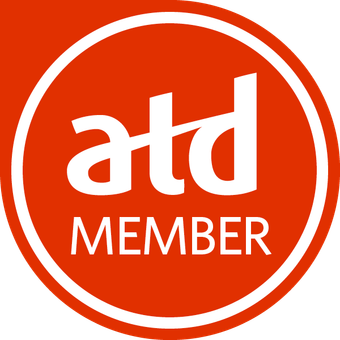 Deciding what changes need to be made may be the easy part. Communicating the change, and obtaining leadership and employee buy-in may be the greater challenge. With all the change that businesses face, you might think that organizations would know how to handle change and do it well.
Deciding what changes need to be made may be the easy part. Communicating the change, and obtaining leadership and employee buy-in may be the greater challenge. With all the change that businesses face, you might think that organizations would know how to handle change and do it well.
What Do Statistics Show?
HR Magazine says that, according to a report by IBM entitled The Future of Banking, this is not the case. The report indicated that, even though the industry expected radical (emphasis mine) change, managing it was quite a different story.
15% said they were very successful at managing change.
32% said they were successful.
33% said they had some success.
15% said they had little to no success.
Research by the Corporate Strategy Board of Arlington, VA, agrees that change is not handled well by organizations, citing a 50% failure rate.
The banking industry is far from being alone in the churn of change. The hospitality industry has also endured its share of change because travel is one of the first perks given up in hard times.
“Going green” has become a mantra for business and citizens, but even it has experienced change in the form of lower prices in areas of recyclables.
Given the changes of the past year in the economy, politics and environment, organizations would do well to understand how to better decide, communicate and implement needed changes.
Why Do Change Efforts Fail?
Flexibility
Many organizations are inflexible. They want to implement change with the finesse of a bulldozer. Driving change without the ability or desire to make needed adjustments tolls the death knell for any change initiative.
Flexibility is particularly important for the small business owner. One thing in your favor is dexterity. Small businesses don’t have the cumbersome layers of management, multiple locations, or ensuring compliance with governmental regulations.
A change endeavor, — a new developmental program, reporting procedure, accounting process or customer service initiative — will not fit every department, every procedure, or even each individual customer or employee.
Solution: CEOs should be certain that current procedures and process are understood. Oftentimes the top executive is the one person who lacks the understanding of workflow, tasks and initiatives. Smaller businesses may need to be careful about ignoring needed changes and bring in another set of eyes in order to obtain a clearer vision. Stay current and keep involved, but avoid micromanagement in the process.
Communication
Leaders often fail to communicate their vision to the executive team. While leaders may give the overall picture or the result of the change they wish to see, direction on how to achieve that vision may be sorely lacking.
Solution: If the reasons for change have been investigated with input from the executive staff, the change will not only make sense, but it will have their support and an understanding of the best implementation procedures.
Smaller business leaders should ensure they have open communication with trustworthy expert sources for guidance in addressing needed changes.
Is Insider Information Best?
“From a certain point of view, our real enemy, the true troublemaker, is inside.”
~~Tenzin Gyatso, the 14th Dalai Lama
The Dalai Lama had a perspective for individuals here, but looking ONLY inside our organizations for answers is not always the best way. Don’t neglect looking inside, as this is where the birth of buy-in occurs. However, just as with people, organizations often can’t see the forest for the trees. Our perspectives have become tainted and mired in minutia, personality conflicts and territorial rifts.
Solution: Be willing to look outside your organization for answers, ideas and solutions. Take what you learn from both inside and outside and marry the best parts of each for effective change.
The Big Picture
The big picture perspective is essential but it’s not the only viewpoint to be considered. We must look at the effects of change on employees. Individual executives, managers and employees are the vehicles for conveying, implementing, adjusting and maintaining change. Therefore, implementing change successfully must begin with each team member.
Solution:
You may think considering the change on a causal level may be a tall order or even nigh to impossible, but it’s an essential foundation for the success of your change initiatives. We know that, as a rule, every person reacts to, and handles, change differently. How can you, as the CEO, executive member, manager or employee understand all people’s reaction to change? It can be accomplished easily and efficiently by understanding every person’s behavioral style. Within the DISC assessment is information on the respondent’s reaction to change. These assessments can be administered at hire and/or at evaluation time. This gives the CEO inside information on handling the executive team. Executive members will understand how to handle each of their managerial reports. Managers will be able to better inform and motivate employees toward the change. Employees will be able to work better as a team with this increased understanding of team members.
A small business leader needs to understand his/her strengths and know what expertise needs to be brought in or outsourced to maximize changes.
Summary:
All businesses face change from time to time. Knowing the elements required to initiate, implement, and maintain change for the size company you operate will play a large role in making change effective.
Diane Bogino has been an entrepreneur since 1969. She has been a successful restaurateur, actress, model, clown, magician, workshop leader, coach and trainer.
She has written 4 books. Her most recently published can be found at www.findingyourbootstraps.com. This book is an inspiration to anyone who has struggled with life’s challenges.


